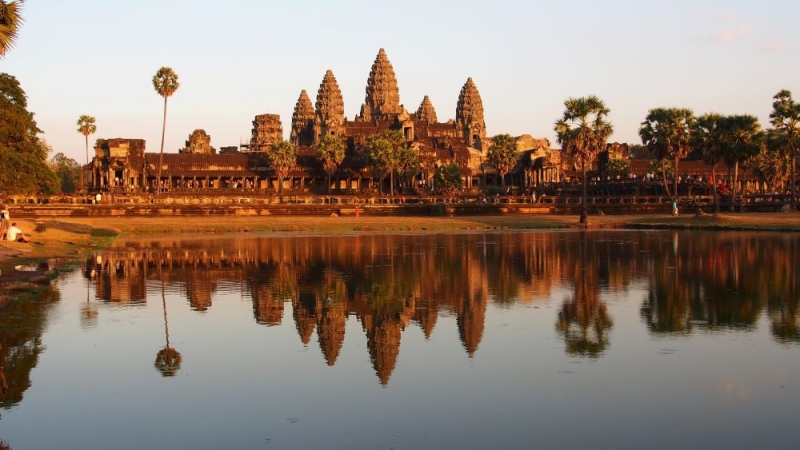
Colorful Cambodia, lost somewhere in the jungles of Southeast Asia, has allowed vaccinated foreigners to enter. To visit the country, vaccinated travelers will need a PCR test no older than 72 hours before arrival and a rapid test, which is done upon arrival at the airport. By the way, unvaccinated people can also do it: however, they will have to spend two weeks in quarantine in a special hotel and take a PCR test on the 13th day. In addition, you will need to take out insurance.
Why fly to Cambodia at all? The country is famous for its beaches, Buddhist centers, cheapness and, of course, ancient architecture.
Siem Reap: the ancient heart of Cambodia
Angkor Wat
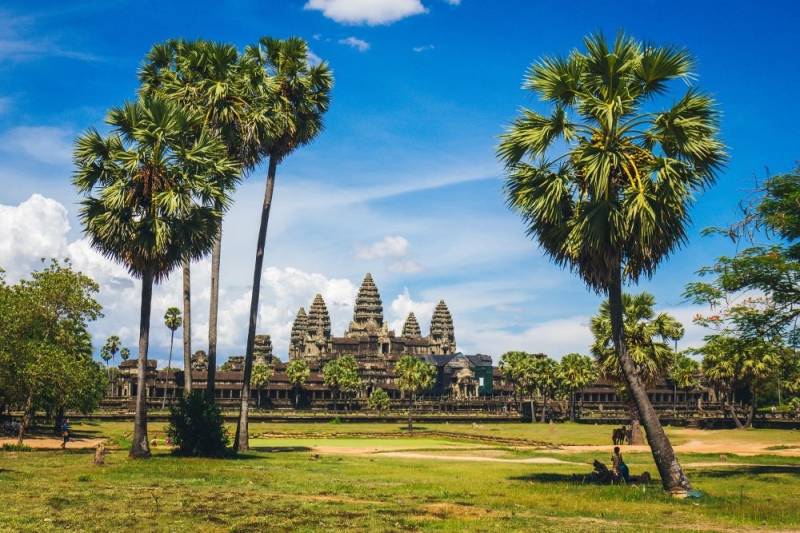
Angkor Wat is considered one of the largest religious buildings in the world. It was erected in the 12th century in honor of the god Vishnu. The temple has five sandstone towers that represent the peaks of Mount Meru, the center of the universe for the ancient Khmers. Angkor Wat is the main national pride of Cambodians; its outline is even placed on the country’s flag. It is noteworthy that for many centuries the temple was considered abandoned and was not visited by either tourists or researchers: it was “rediscovered” only in 1861. But all this time, monks of the Theravada Buddhist school continued to live here.
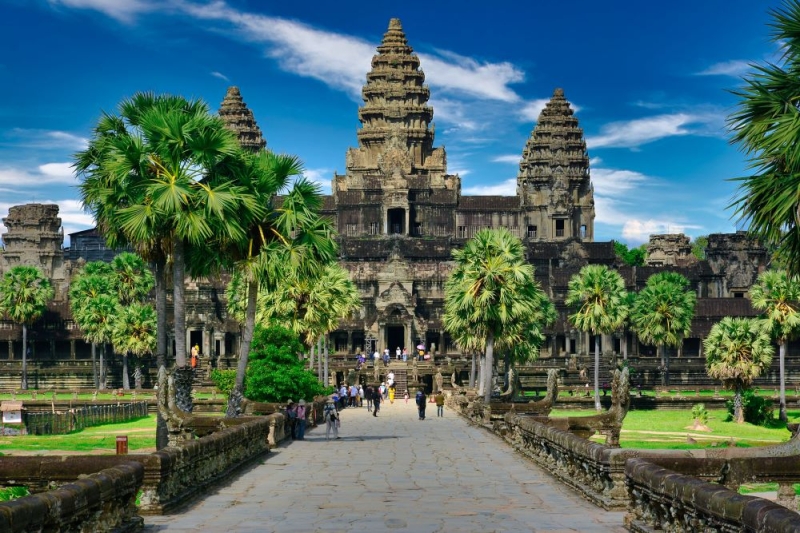
By the way, it was the stories about the destroyed city of Angkor Wat, lost somewhere in the jungle, that inspired the writer Rudyard Kipling to create the story about Mowgli and the kingdom of the Banderlogs.
Angkor Wat, along with several other ancient Khmer buildings (we will talk about four more of them below), is part of the Angkor Historical Reserve. Two visits will be enough for you to have a detailed excursion, and if you spend the whole day, you can see everything at once. A two-day pass will cost $37*, a five-day pass will cost $62*.
Angkor Thom
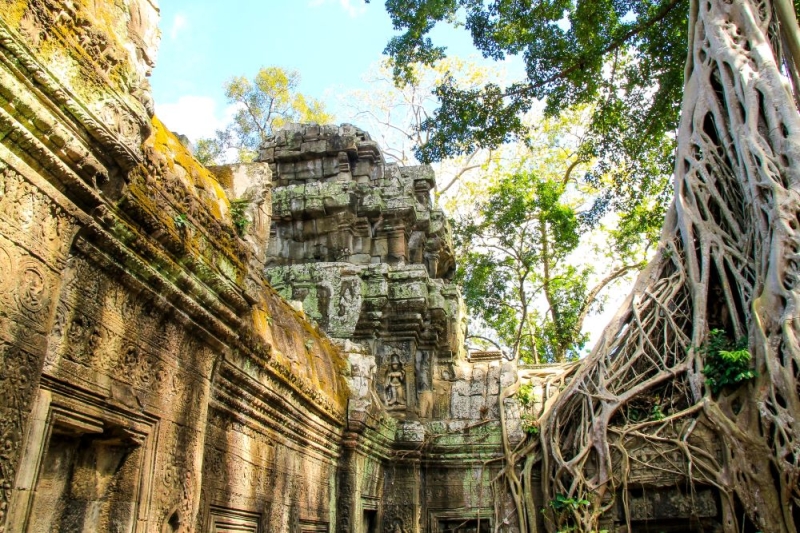
The Angkor Thom complex is located not far from Angkor Wat. In fact, this is a real ancient city, built in 1177. Its founder, King Jayavarman VII, called the city of Angkor Thom his “bride” (that is, the main business of his life). From the 12th to the 15th centuries, Angkor Thom was the capital of the Khmer Empire.
Historians believe that at its height the city’s population exceeded one million people, and its total area was approximately 900 hectares. All residential buildings were wooden and therefore have not survived to this day: today we can examine the fortress and religious buildings.
Bayonne

Bayon is called the most remarkable and richly decorated temple of the Angkor reserve. It is easily recognized by the giant stone sculptures of the faces of Avalokiteshvara, a bodhisattva considered the embodiment of wisdom, kindness and compassion. The sanctuary is decorated with 52 square towers, on each side of which a calm smiling face is carved. They say this was done so that the gaze of the Enlightened One would greet every visitor. According to archaeologists, Bayon was built at the end of the 12th or beginning of the 13th century. Historians call the building “the most striking expression of the Baroque style” of Khmer architecture.
Bapuon
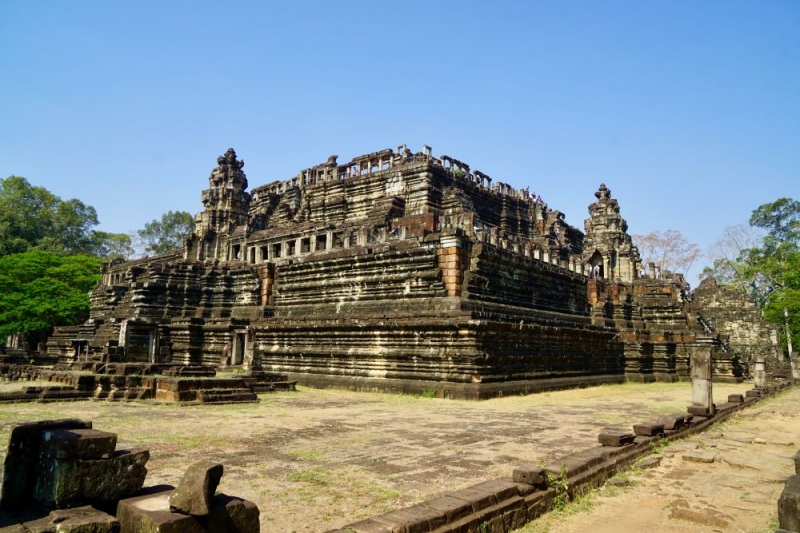
The Bapuon Hindu Temple was built in the 11th century as the center of the capital of Udayadityavarman II (however, at a later time a statue of a reclining Buddha was added to this sanctuary: it was not completely completed and is now barely visible). Bapuon today is in a dilapidated state, and not all of its locations are open for inspection, despite the fact that restoration work here began in the 60s of the last century. It’s all about the miscalculations of ancient architects, which makes the structure very difficult to preserve. There were four large libraries in Bapuon – these premises are still available for visiting.
Ta Prum
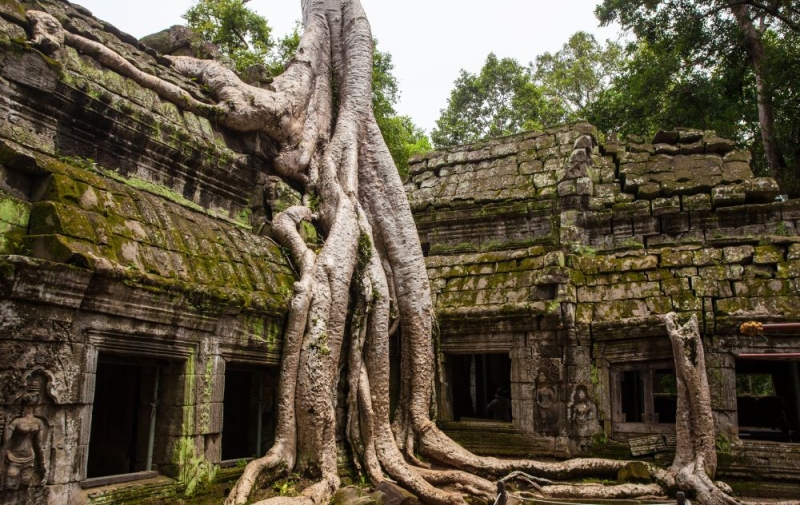
You will probably recognize this temple at first sight: it “lit up” in the film “Lara Croft: Tomb Raider” and has since earned the nickname “Angelina Jolie Temple” among Cambodians (as you know, the actress and UN Goodwill Ambassador has done a lot for the country , received Cambodian citizenship, and even one of her directorial projects was dedicated to Cambodia). Ta Prum was built in the 12th century in honor of the mother of Emperor Jayavarman VII, but people abandoned it in the 15th century, and since then the structure has been absorbed by nature: the stone walls today are entwined with vines, roots and branches of trees. It is best to explore this temple accompanied by a guide: he will help you find hidden corners that are not so easy to find on your own. In general, many tourists note that Ta Phrum makes a very strong impression precisely because the structure seems to have merged with the jungle.
Banteay Srei
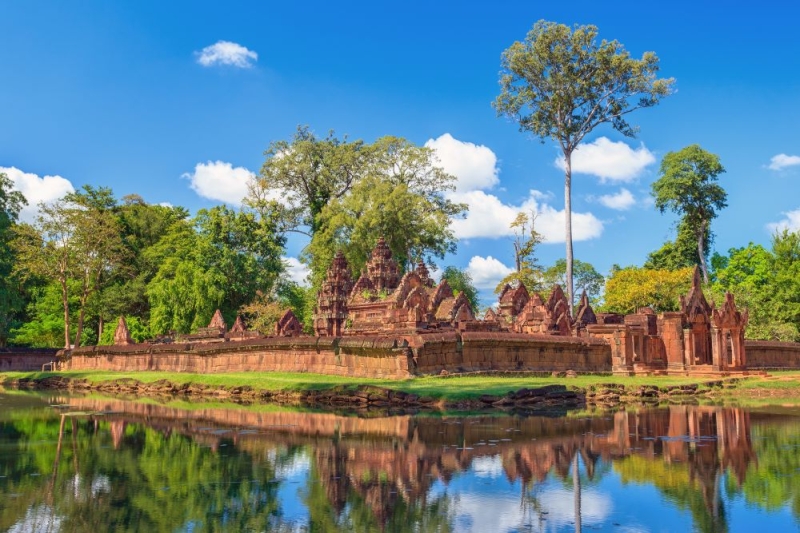
Banteay Srei is a temple complex that is located a little further from the Angkor Nature Reserve: driving there from Siem Reap is about 25 kilometers, and it is better to rent a car rather than a tuk-tuk, because you will have to get there along a dusty country road. The temple, built in 967, is dedicated to the Hindu god Shiva, although its name means “Citadel of a Woman.” This is probably due to the elegant carvings and pink color of the sandstone: scientists say that the name of the structure is much more modern than the structure itself. Banteay Srei is the only local temple built not by a monarch, but by the royal dignitary Yajnavarah, a scientist and philanthropist who helped the poor, the suffering, the sick and the innocent.
Angkor National Museum
It was opened quite recently – in 2007, but it is here that key archaeological artifacts from the Khmer Empire period are stored. Among the most interesting halls is the Gallery of a Thousand Buddhas, with an impressive number of exhibits (probably there are actually a thousand of them!). We recommend visiting this museum the day after visiting Angkor to better understand this chapter of history, almost unknown to Europeans.
Wat Bo Pagoda

The beautiful, quaint Buddhist temple in the heart of Siem Reap is not as antique as others around the city: it was built in the 19th century. Visitors will be interested in seeing reliefs, frescoes and sculptures; There are English-speaking monks at the temple who can give you a short tour. There is an ancient cemetery nearby.
Where to stay: at the five-star Mane Boutique Hotel & Spa (from 13 800 rubles* per night in double occupancy) or in a hostel with a swimming pool Jasmine Family Hostel (from 1000 rubles* per night in a double room).
Phnom Penh: residence of kings
Wat Phnom Monastery
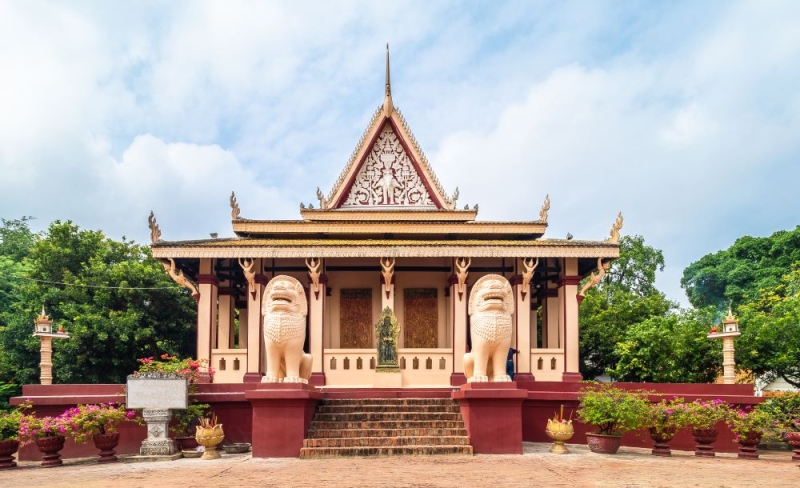
If you arrive in Phnom Penh in the morning, head straight to Wat Phnom: it is especially beautiful in the rays of the dawn sun. According to legend, the city itself was founded in 1372 by a rich widow named Pen, who saw a lumbang tree trunk floating on the Mekong River, in whose branches something glittered. It turned out that these were four bronze statues of Buddha and one stone (historians believe that they were washed away by a flood from a Laotian temple). With the assistance of Pen, a large mound (pnom) was built near her house and an altar was installed on which the statues were placed. Subsequently, the monastery of Wat Phnom arose on this site.
This monastery, dating back to 1373, stands on a 27-meter hill. These days, locals often come here to ask for good luck in passing exams and doing business. After a person’s wish is fulfilled, he returns to Wat Phnom with an offering (usually garlands of jasmine flowers or bananas).
Royal Palace
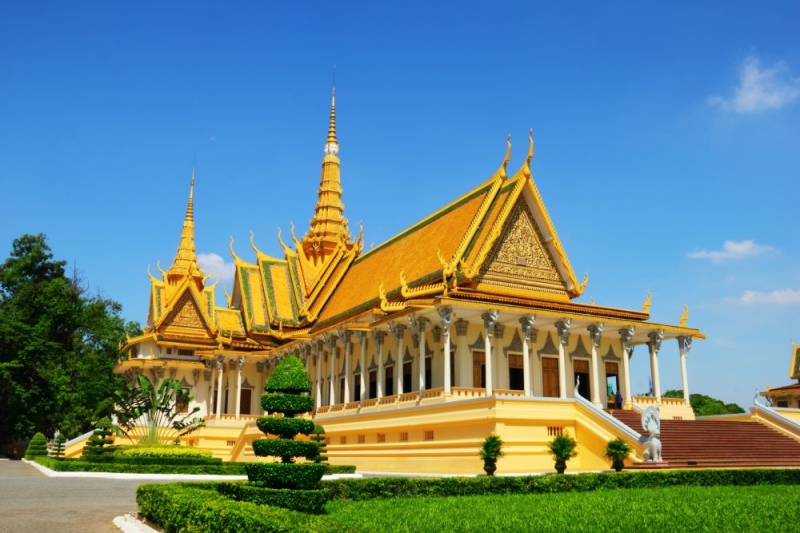
The Royal Palace is the current residence of the kings of Cambodia. Monarchs have resided here since the building was built in the 1860s (with the exception of the Khmer Rouge regime). Nevertheless, everyone can visit the territory of the palace (although some corners of the royal house are closed to ordinary people). Among the locations worth visiting are the Throne Hall, the Silver Pagoda, the Moonlight Pavilion, the Elephant Pavilion, the Hemarina Palace, the Royal Stupas and the “Chapel of Vows” of Wat Vihear Suor. A walk through the palace grounds will thoroughly introduce you to the local traditional architecture, which is very reminiscent of Thai architecture.
Royal Tomb
The mausoleum of royalty is located 35 kilometers from Phnom Penh – in the town of Oudong, which once held the title of the Cambodian capital. The monumental necropolis was erected on the top of the mountain: despite the fact that during the dictatorship of the Khmer Rouge the tomb was severely damaged, it was restored to its original splendor.
National Museum of Cambodia
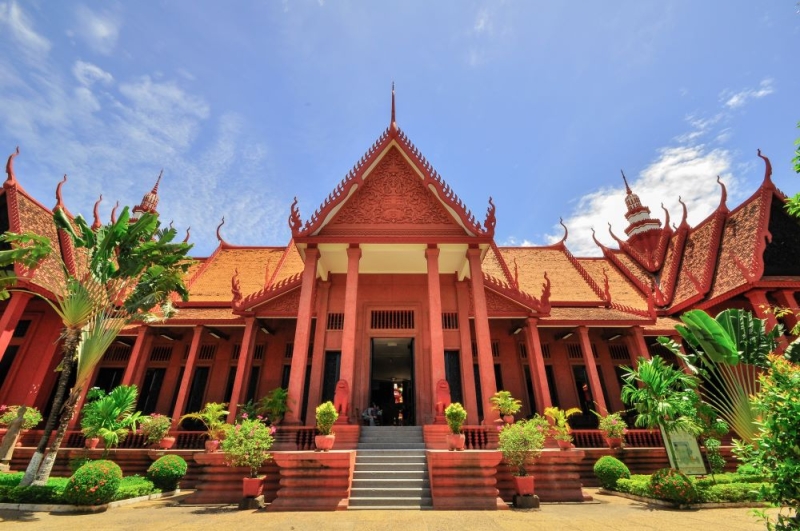
The museum was opened in 1920, but its history is already stunning in its drama. During the Khmer Rouge regime, all evidence of Cambodian national identity and culture was destroyed, so the museum was closed and its employees were repressed; For several years, the building fell into disrepair—bats infested itself under the roof, the garden became disorderly overgrown, and the collection was partially looted. But in 1979, immediately after the fall of the bloody regime, the museum was reopened, although its complete restoration took years.
Today it houses the world’s largest collection of Khmer art, which includes sculptures, ceramics and bronze objects. The architecture of the National Museum of Cambodia itself is also impressive: be sure to set aside at least half an hour to walk around the museum courtyard and explore the exterior of the building.
Where to stay: At the five-star Palace Gate Hotel & Resort (from 7900 rubles* per night in a double room) or in the budget but very cozy YK Art House hotel (from 1900 rubles* per night in a double room).
Battambang: Angkor Wat in miniature
Wat Banan

Wat Banan is considered the best preserved of the Khmer temples in Battambang province. It resembles a greatly reduced copy of the famous Angkor Wat. This sanctuary was built by Hindus in the 11th century. Not far from it there is another temple of the same time – Wat Ek Phnom. True, it has survived to this day in a much worse condition: the religious building was repeatedly looted and destroyed. However, this does not stop lovers of antiquities and special atmosphere.
Where to stay: In the four-star tropical villa Maisons Wat Kor (price per night in a double room – from 8800 rubles*), or in the authentic Banan Hotel (from 1600 rubles per night in a double room).
Sihanoukville: the most inaccessible sanctuaries
Pagoda and church in Bokor Park
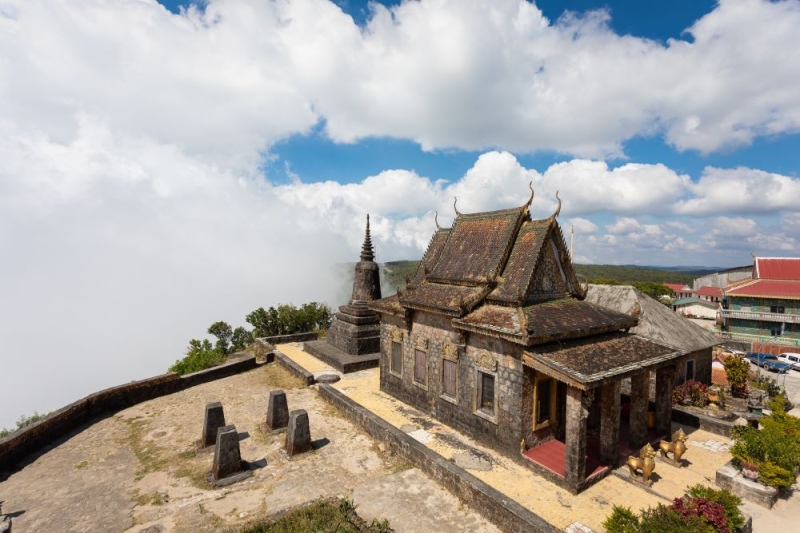
Bokor National Park is a magnificent location that in itself deserves a visit. If you came here for hiking and watching wild animals, do not miss the opportunity to get acquainted with the architectural monuments. The pagoda is located at the very top of Bokor Park – at an altitude of 1000 meters above sea level, so only the brave can make it here. But an abandoned church, built in a traditional European style, can be seen if you go up the serpentine road in an SUV. There are still frescoes inside the church.
Where to stay: At the luxurious beach hotel Sokha Beach Resort (from 10,700 rubles* per night in a double room) or at the cozy Om guest house Home on the lake shore (from 1500 rubles* per night).
Pnomth Beng Meanthey: a temple belonging to two countries
Preah Vihear Temple

The temple complex of the Khmer Empire, built in 893 and dedicated to the god Shiva Shikhareshvara, today lies on the border between Cambodia and Thailand (it can be visited from both sides). It was recognized as a UNESCO World Heritage Site in 2008: this decision, by the way, caused fierce territorial disputes between Thailand and Cambodia and even led to several armed clashes. Fortunately, today it is safe: you can come to admire the structure, almost untouched by people and escaped the triumph of the jungle. The hill on which Preah Vihear stands offers breathtaking views of the emerald valleys of northern Cambodia.
Where to stay: At the Sokha Home guest house (from 1,500 rubles per night in a double room).
Our “Where to Go” project will help you with ideas for your upcoming vacation. You choose the month and city of departure, and we offer the most interesting and affordable options – with ticket prices and information about restrictions for tourists.
*Prices valid at time of publication

